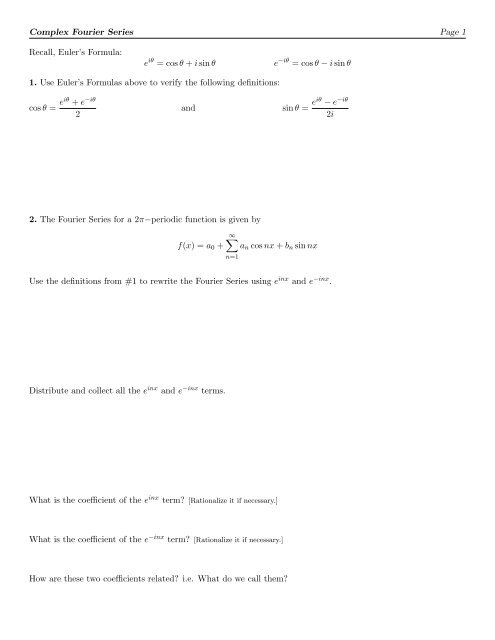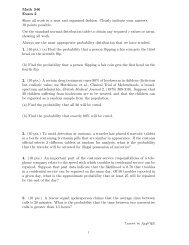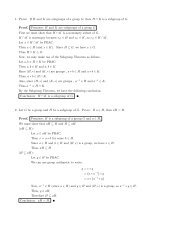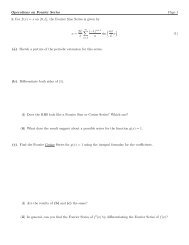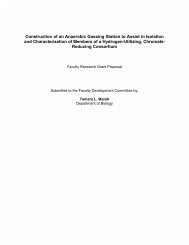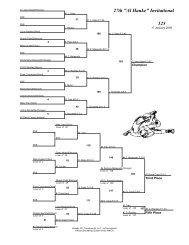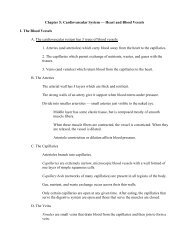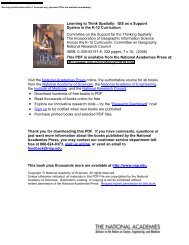Complex Fourier Series Worksheet
Complex Fourier Series Worksheet
Complex Fourier Series Worksheet
Create successful ePaper yourself
Turn your PDF publications into a flip-book with our unique Google optimized e-Paper software.
<strong>Complex</strong> <strong>Fourier</strong> <strong>Series</strong> Page 1<br />
Recall, Euler’s Formula:<br />
e iθ = cos θ + i sin θ e −iθ = cos θ − i sin θ<br />
1. Use Euler’s Formulas above to verify the following definitions:<br />
cos θ = eiθ + e −iθ<br />
2<br />
2. The <strong>Fourier</strong> <strong>Series</strong> for a 2π−periodic function is given by<br />
and sin θ = eiθ − e −iθ<br />
f(x) = a0 +<br />
∞<br />
an cos nx + bn sin nx<br />
Use the definitions from #1 to rewrite the <strong>Fourier</strong> <strong>Series</strong> using e inx and e −inx .<br />
Distribute and collect all the e inx and e −inx terms.<br />
n=1<br />
What is the coefficient of the e inx term? [Rationalize it if necessary.]<br />
What is the coefficient of the e −inx term? [Rationalize it if necessary.]<br />
How are these two coefficients related? i.e. What do we call them?<br />
2i
<strong>Complex</strong> <strong>Fourier</strong> <strong>Series</strong> Page 2<br />
Let<br />
c0 = a0<br />
cn = coefficient of e inx<br />
cn = coefficient of e −inx cn denotes complex conjugate<br />
Then if you rewrite the <strong>Fourier</strong> <strong>Series</strong> in terms using complex exponentials and these coefficients, you should get<br />
f(x) = c0 +<br />
Clearly define c0, cn, and cn in terms of an and bn.<br />
∞<br />
n=1<br />
cne inx + cn e −inx<br />
3. Let cn be denoted by c−n since it corresponds to the coefficients preceding e−inx (i.e. term involving −n).<br />
Now<br />
∞<br />
f(x) = c0 + cne inx + c−n e −inx<br />
n=1<br />
which can be condensed into the single term series below<br />
[Fill in the bounds – it may be helpful to write out a few of the terms in the series.]<br />
This form is called the <strong>Complex</strong> <strong>Fourier</strong> <strong>Series</strong> for f(x).<br />
f(x) = <br />
cne inx<br />
n=
<strong>Complex</strong> <strong>Fourier</strong> <strong>Series</strong> Page 3<br />
4. Homework: Use the relationship cn = an − ibn<br />
2<br />
for the complex <strong>Fourier</strong> coefficients:<br />
cn = 1<br />
2π<br />
π<br />
−π<br />
and the integrals for an and bn to derive the following formula<br />
f(x)e −inx dx which is valid for all integers n (e.g. negative, positive, and zero).<br />
5. Find the <strong>Complex</strong> <strong>Fourier</strong> Coefficients for f(x) =<br />
1 0 < x < π<br />
−1 −π < x < 0
<strong>Complex</strong> <strong>Fourier</strong> <strong>Series</strong> Page 4<br />
6. Given f(x) = e αx on −π < x < π.<br />
(a). Find the <strong>Complex</strong> <strong>Fourier</strong> Coefficients for<br />
(b). Find an and bn from part (a) using the relationship cn = an − ibn<br />
2<br />
(found in #2)


